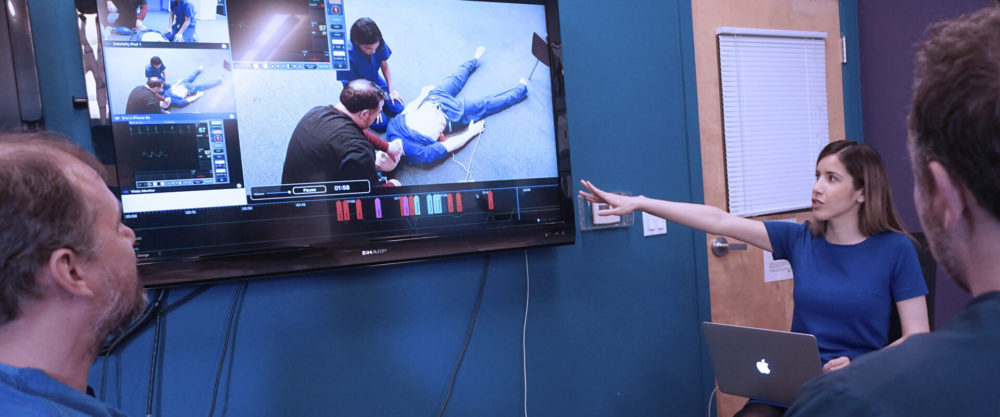Stanford CAPE Video Talks on Simulation Debriefing, Care of Debriefly
Video in Simulation is a new series featuring Dr. Lou Halamek of the CAPE at Stanford simulation center discussing his philosophies of sim training and the use of video debriefing. This series of educational videos was produced by Debriefly, a new iOS- and Mac-based video capture solution for clinical simulation recording and debriefing. Debriefly is releasing the series in easily digestible clips – the first few are available now on their Youtube channel, with lots more to come in the following months.
About CAPE and Dr. Lou Halamek
CAPE is the world’s first simulation-based training and research center dedicated to the fetal, neonatal, pediatric and obstetric sciences. CAPE opened its doors in November 2002, thanks to a generous gift from an anonymous donor. A part of Stanford Medicine, CAPE’s training programs are greatly enriched by a close connection with Stanford Children’s Health and a shared commitment to state-of-the-art patient care and the training that makes that possible. Many of the healthcare professionals who teach at CAPE also care for patients within Stanford Children’s Health and serve on the faculty of the Stanford University School of Medicine.
Sponsored Content:
Dr. Louis Halamek, CAPE’s Director, founded CAPE on the principle that rigorous training and objective assessment will produce optimal human performance. His inspiration comes from his work with NASA and their many decades of experience in training human beings to function in high-risk environments. Dr. Halamek is a neonatologist at Lucile Packard Children’s Hospital and Professor of Pediatrics at Stanford University. He has over twenty years of experience in simulation-based training and research. Today, CAPE offers multiple training programs to novices and experts alike and is the site of clinically relevant research. The goal of every CAPE training and research program is to improve the safety, efficiency and effectiveness of patient care. Learn more about CAPE on their website!
CAPE Video in Simulation Series from Debriefly
Part 1: What Really Happened?
When debriefing a sim session, there’s often disagreement about who did or didn’t do what, and when. Video debrief is a powerful way to get everyone on the same page
Part 2: Debriefing Without Video
The challenges of assessing technical performance in simulation without the benefit of an audio/video record of the event.
Sponsored Content:
Part 3: It’s Not ‘Rubbing It In’
Answering the question: “Why would you want to “rub in” someone’s mistakes in a sim by showing them on video?”
About Debriefly
Debriefly is a fast and easy way to harness the power of video capture to improve the quality of simulation learning. Debriefly offers complete capture and debriefing solutions that are easy enough for clinicians to use with no training, and powerful enough to take your sim sessions to the next level. Read our previous article about Debriefly to learn more about our take on their systems.
Debriefly Offers:
- One-click record, one-click debrief: The Debriefly app for Mac OS X sets a new industry standard for simplicity
- Flexible Presentation Mode: Drag and Drop cameras or vitals to overlay any corner of the main window. Presentation Mode shows distraction-free video to learners on a projector or second monitor.
- Camera integration: Automated discovery of up to five cameras plus selection from multiple ALSi systems
- Open QuickTime format: All Debriefly video is QuickTime, which can be edited in a wide variety of applications and easily shared via YouTube and other services
- Fully integrated with ALSi:
- Wireless recording of ALSi patient monitor video and data points
- Automated import of ALSi event markers to the Debriefly timeline: Quick Pick selection, Teaching Points, standard and custom comments, student actions
Learn more about the Video Capturing & Debriefing Systems of Debriefly!
Sponsored Content:

















